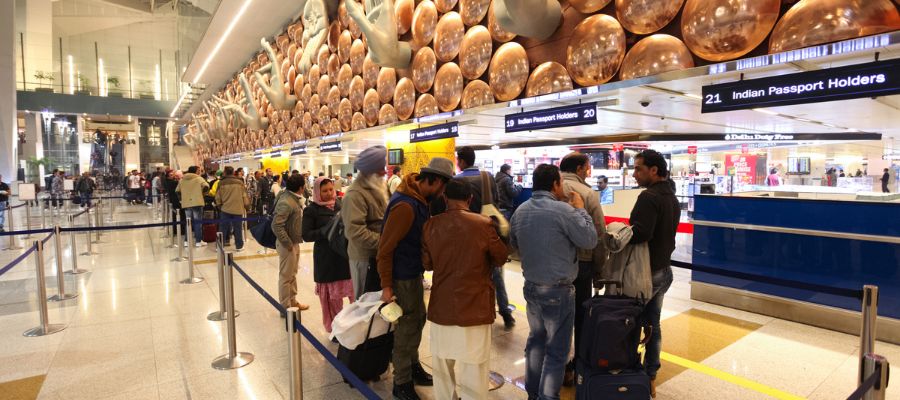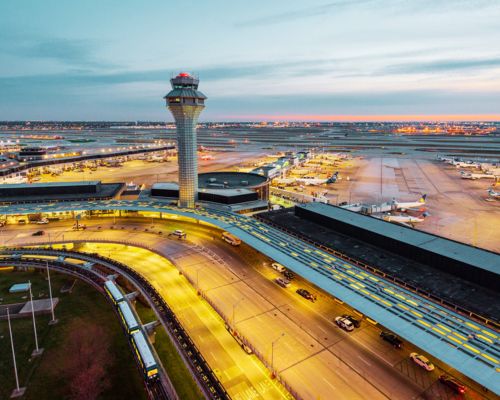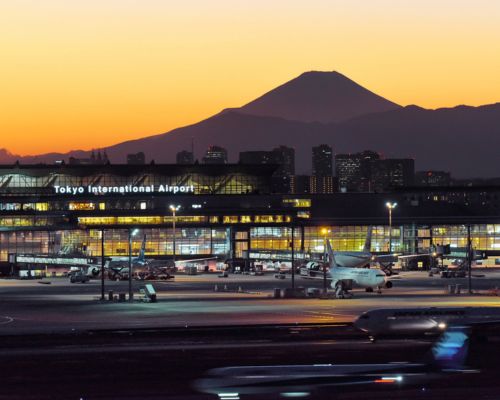- News >
- The World Top 12 Airports with the Highest Profitability
The World Top 12 Airports with the Highest Profitability

In today's global economy, airports have evolved into multifaceted entities that go beyond being mere transit hubs. They play a pivotal role in facilitating seamless travel and trade, becoming crucial economic engines in their own right. This article explores the 12 most profitable airports in the world, analyzing their revenue generation, industry trends, and key players.
Revenue Generation and Outlook
Airports generate revenue from a combination of aeronautical and non-aeronautical sources. Aeronautical revenue comes from charges imposed on airlines and aircraft operations, such as landing fees, aircraft parking fees, passenger fees, and fuel sales. Non-aeronautical revenue is derived from terminal concessions, including retail shops, restaurants, and duty-free stores. Additional sources of revenue include car parking fees, advertising and sponsorship agreements, rental income from commercial spaces, ground transportation fees, and revenue-sharing agreements with service providers.
According to International Airport Review, the global airport industry experienced a significant revenue increase of $172.2 billion, indicating financial success and profitability worldwide. Despite rising fuel costs and global economic uncertainty, air travel demand has remained strong, leading to the overall prosperity and profitability of the aviation industry.
Key Players in the Aviation Industry
In addition to airlines, airport operators also play a significant role in the global air transit industry. Companies like Fraport AG, with its portfolio of 28 airports worldwide, and Heathrow Airport Holdings, operating six British airports and Naples Airport, exemplify the scale and influence of airport operators. These companies oversee airport operations, develop infrastructure, and attract new airlines and routes, ensuring smooth operations and financial success.
Trends in Air Travel for 2023
1. "Bleisure" Travel
"Bleisure" travel, a combination of business and leisure travel, gained popularity during the pandemic as remote work became more prevalent. This trend is expected to continue in 2023 as passengers seek to explore new destinations and add vacation time to their business trips. Airlines have responded by reconfiguring their cabins to offer more business-class seating and enhancing the overall travel experience for this segment of travelers.
For example, Delta Airlines Inc (NYSE:DAL) is revolutionizing customer experience (CX) with its Delta Sync initiative, offering free Wi-Fi to all passengers and personalized recommendations and rewards through partnerships with brands like Paramount+ and New York Times.
2. Accessibility and Inclusion
Accessibility and inclusion will be a priority in 2023, with airlines and airports collaborating with disability groups to improve the travel experience for individuals with disabilities. Efforts include introducing autonomous wheelchairs and larger restrooms to accommodate mobility devices.
Amsterdam Airport Schiphol conducted a trial of autonomous wheelchairs to assess their viability in providing convenient transportation for passengers with reduced mobility, older adults, and those who require wheelchair assistance.
3. The Power of Data
Data plays a crucial role in the aviation industry, enabling airlines, airports, and ground handlers to drive operational improvements. The Internet of Things (IoT) and AI-driven algorithms enhance data management, resource planning, and real-time decision-making.
Qatar Airways is partnering with Alphabet Inc (NASDAQ:GOOG) 's Cloud to leverage data analytics, AI, and machine learning solutions to gain valuable insights from the vast amount of structured and unstructured data generated by the airline's passengers.
4. Strategic Partnerships
In the aviation industry, airports and airlines often form strategic partnerships to optimize operations, improve the passenger experience, and achieve financial success. Airlines rely on airports to provide efficient services and infrastructure, while airport management companies oversee operations, develop infrastructure, and attract new airlines and routes.
Atlas Air Worldwide Holdings Inc (NASDAQ:AAWW) organized a humanitarian flight to deliver relief supplies, showcasing their commitment to supporting global relief efforts.
5. Sustainability
Sustainability is a prominent theme in 2023, as airlines and airports take steps to reduce their environmental impact. Initiatives include the introduction of sustainable aircraft, the development of sustainable fuels, carbon capture projects, and green certifications.
Atlas Air Worldwide Holdings (NASDAQ:AAWW) airlines have focused on improving fuel efficiency, investing in hybrid and electric vehicles and equipment, and receiving Green Globes certificates for resource efficiency and environmental impact mitigation.
Methodology for Identifying Profitable Airports
To compile the list of the most profitable airports, data from FlightsForum by WESTCOAST DIGITAL AB was used. The number of flights per day was used as a proxy to determine airport success. Airports with a higher number of flights generally indicate increased revenue opportunities from landing fees, terminal fees, and passenger charges. More flights also attract airlines, passengers, and businesses, stimulating passenger traffic and revenue.
The World's Top 12 Airports with the Highest Profitability
In today's globalized world, airports play a crucial role in facilitating travel and trade, evolving into multifaceted entities that contribute significantly to the economy. This article highlights the 12 most profitable airports worldwide, exploring their revenue generation, industry trends, and key players.
1. Hartsfield–Jackson Atlanta International Airport (ATL):
With an impressive 910 flights per day, ATL is the most profitable airport globally. It generates an estimated $34.8 billion in economic impact for the Atlanta metropolitan area, making it the largest employer in the state of Georgia. ATL's strategic location and operational efficiency contribute to its success.

2. Dallas Fort Worth International Airport (DFW):
DFW handles 848 flights per day and benefits from the vibrant Dallas-Fort Worth metroplex. It attracts a constant influx of travelers due to its extensive network of major airlines. Operational excellence, state-of-the-art facilities, and exceptional customer service further reinforce its profitability.
3. Chicago O'Hare International Airport (ORD):
ORD, with 826 flights per day, is the world's most connected airport. Serving as a vital transportation hub, it facilitates global travel and plays a crucial role in the region's economy. Terminal 5 at ORD has experienced record numbers, leading to the introduction of new airlines to meet growing demand.

4. Denver International Airport (DIA):
DIA, with 776 flights per day, offers nonstop flights to over 215 destinations, surpassing any other airport in the United States. Its extensive network and strategic location make it a vital gateway, contributing to its profitability and success.
5. Charlotte Douglas International Airport (CLT):
Handling 673 flights per day, CLT serves as a key hub for domestic and international travel, particularly in the Southeastern United States. It supports regional tourism, trade, and economic activities by connecting travelers through its network of airlines and locations.

6. Los Angeles International Airport (LAX):
LAX, with 659 flights per day, is renowned for its size and importance as a major aviation hub. It offers a wide range of domestic and international flight options, supporting tourism, business, and commercial endeavors in the region.
7. Tokyo International Airport (HND):
Also known as Haneda Airport, HND handles 613 flights per day and serves as a major hub for both domestic and international travel. Its strategic location, efficient operations, and strong connectivity to major cities worldwide contribute to its profitability.

8. John F. Kennedy International Airport (JFK):
Situated near New York City, JFK benefits from the high demand for travel to and from one of the world's most prominent metropolitan areas. With 581 flights per day, JFK attracts a large volume of passengers, generating substantial revenue from its diverse network of airlines and modern infrastructure.
9. Istanbul Airport (IST):
IST, with 577 flights per day, benefits from its location at the crossroads of Europe, Asia, and the Middle East. It serves diverse travelers and experiences increasing air traffic due to Istanbul's growing prominence as an economic and cultural hub.

10. Delhi Airport (DEL):
Handling 558 flights per day, DEL is a vital transportation hub in India, connecting domestic and international flights. Its ongoing expansion aims to make it the world's largest airport, surpassing Atlanta Airport in passenger capacity.
11. Amsterdam Airport Schiphol (AMS):
With 536 flights per day, AMS is one of Europe's most important airports, serving as the primary international gateway to the Netherlands. Its excellent connectivity, efficient operations, and commitment to passenger experience contribute to its profitability.

12. Shanghai Pudong International Airport (PVG):
PVG, with 530 flights per day, is strategically located in Shanghai, one of the world's largest economic and financial centers. As China's primary international gateway, PVG plays a crucial role in facilitating global trade, attracting foreign investment, and promoting tourism.
Conclusion:
These 12 airports stand out as the most profitable in the world, generating substantial revenue through their efficient operations, excellent connectivity, and commitment to passenger experience. Their strategic locations, extensive networks of airlines, and modern infrastructure contribute to their profitability and position them as leaders in the global aviation industry.
